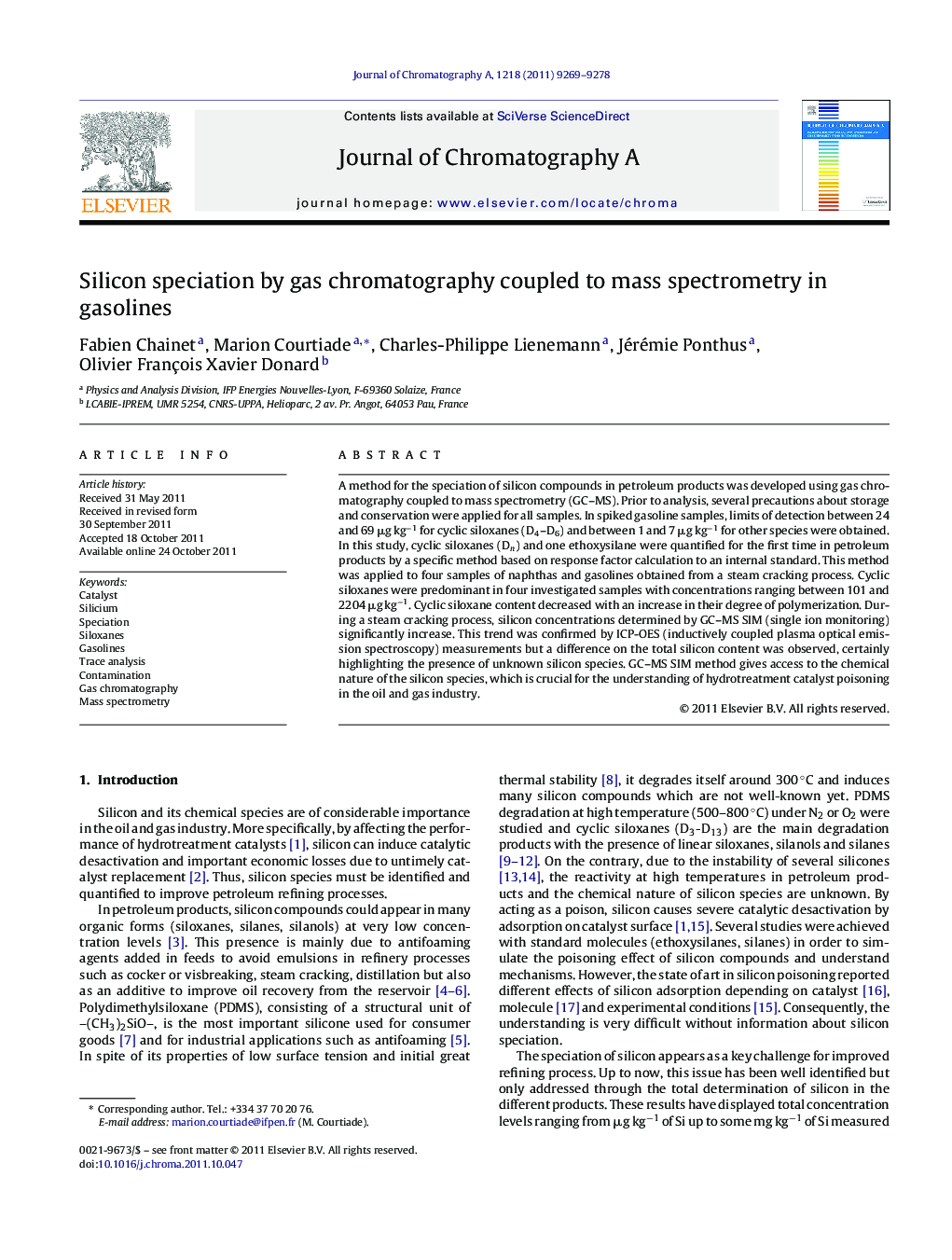| Article ID | Journal | Published Year | Pages | File Type |
|---|---|---|---|---|
| 1203274 | Journal of Chromatography A | 2011 | 10 Pages |
A method for the speciation of silicon compounds in petroleum products was developed using gas chromatography coupled to mass spectrometry (GC–MS). Prior to analysis, several precautions about storage and conservation were applied for all samples. In spiked gasoline samples, limits of detection between 24 and 69 μg kg−1 for cyclic siloxanes (D4–D6) and between 1 and 7 μg kg−1 for other species were obtained. In this study, cyclic siloxanes (Dn) and one ethoxysilane were quantified for the first time in petroleum products by a specific method based on response factor calculation to an internal standard. This method was applied to four samples of naphthas and gasolines obtained from a steam cracking process. Cyclic siloxanes were predominant in four investigated samples with concentrations ranging between 101 and 2204 μg kg−1. Cyclic siloxane content decreased with an increase in their degree of polymerization. During a steam cracking process, silicon concentrations determined by GC–MS SIM (single ion monitoring) significantly increase. This trend was confirmed by ICP-OES (inductively coupled plasma optical emission spectroscopy) measurements but a difference on the total silicon content was observed, certainly highlighting the presence of unknown silicon species. GC–MS SIM method gives access to the chemical nature of the silicon species, which is crucial for the understanding of hydrotreatment catalyst poisoning in the oil and gas industry.
► The chemical nature of silicon species is essential to understand catalyst poisoning. ► A method for silicon speciation at trace levels in light petroleum products using GC/MS. ► Identification and quantification of siloxanes and ethoxysilane in gasolines. ► The total content of silicon certainly highlights the presence of unknown silicon species.
